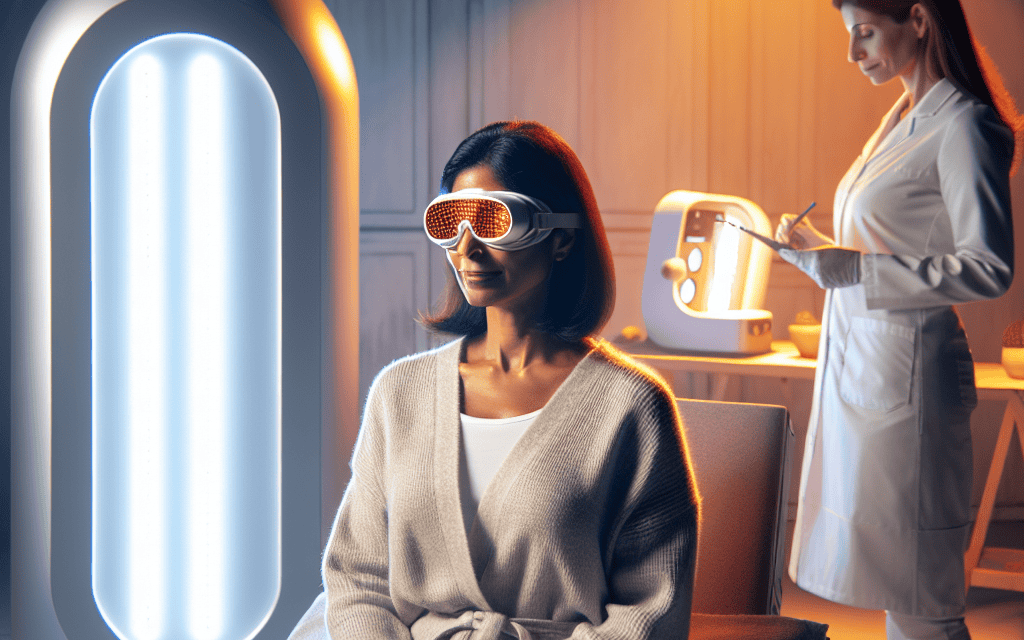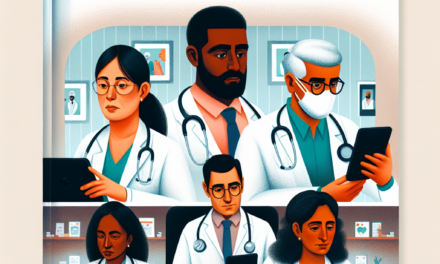Embracing Light Therapy: A Modern Solution for Wellness
In an age where mental health and overall wellness are increasingly prioritized, innovative solutions are emerging to address these concerns. One such solution is light therapy, a treatment that harnesses the power of light to improve mood, sleep, and overall health. This article delves into the various aspects of light therapy, exploring its mechanisms, benefits, applications, and the science behind it. By the end, readers will have a comprehensive understanding of how light therapy can be a modern solution for wellness.
Understanding Light Therapy: The Basics
Light therapy, also known as phototherapy, involves exposure to specific wavelengths of light to treat various conditions. It is most commonly associated with Seasonal Affective Disorder (SAD), a type of depression that occurs at certain times of the year, typically in the winter months when natural sunlight is scarce. However, its applications extend far beyond SAD.
Light therapy works by mimicking natural sunlight, which can help regulate the body’s circadian rhythms and improve mood. The therapy typically involves the use of light boxes that emit bright light, usually around 10,000 lux, which is significantly brighter than standard indoor lighting. The treatment is generally administered for about 20 to 30 minutes each day, preferably in the morning.
Research has shown that light therapy can influence the production of serotonin, a neurotransmitter that plays a crucial role in mood regulation. Additionally, it can help suppress melatonin production during the day, which is essential for maintaining alertness and energy levels.
The Science Behind Light Therapy
The effectiveness of light therapy is rooted in its ability to influence biological processes. The human body has a natural circadian rhythm, a 24-hour internal clock that regulates sleep-wake cycles, hormone release, and other bodily functions. This rhythm is heavily influenced by light exposure, particularly blue light, which is abundant in natural sunlight.
When light enters the eyes, it is detected by specialized photoreceptors in the retina. These receptors send signals to the suprachiasmatic nucleus (SCN) in the brain, which is responsible for regulating circadian rhythms. The SCN then communicates with other parts of the brain to control the release of hormones like melatonin and cortisol.
Studies have shown that exposure to bright light can lead to:
- Increased serotonin levels, improving mood and reducing symptoms of depression.
- Regulation of melatonin production, enhancing sleep quality.
- Improved cognitive function and alertness.
Research published in the journal “Psychological Medicine” found that light therapy significantly reduced depressive symptoms in patients with SAD, with many experiencing relief within just a few days of treatment. Another study in “The American Journal of Psychiatry” highlighted the positive effects of light therapy on non-seasonal depression, suggesting its broader applicability.
Applications of Light Therapy
Light therapy has a wide range of applications beyond treating SAD. Here are some of the most notable uses:
1. Treatment of Seasonal Affective Disorder (SAD)
SAD is characterized by depressive symptoms that occur during specific seasons, primarily winter. The lack of sunlight during these months can lead to feelings of sadness, lethargy, and social withdrawal. Light therapy has been shown to be an effective treatment for SAD, with studies indicating that about 60-80% of individuals with SAD experience significant improvement with light therapy.
2. Management of Non-Seasonal Depression
While SAD is the most well-known application, light therapy has also been found effective for non-seasonal depression. Research indicates that light therapy can be as effective as antidepressant medications for some individuals. A meta-analysis published in “The Journal of Affective Disorders” found that light therapy significantly reduced depressive symptoms in patients with non-seasonal depression.
3. Sleep Disorders
Light therapy can also be beneficial for individuals suffering from sleep disorders, such as insomnia or delayed sleep phase disorder. By regulating circadian rhythms, light therapy can help individuals fall asleep more easily and improve overall sleep quality. A study published in “Sleep Medicine Reviews” found that light therapy improved sleep quality and duration in patients with insomnia.
4. Skin Conditions
Light therapy is not limited to mental health; it has also been used to treat various skin conditions, including psoriasis, eczema, and acne. Ultraviolet (UV) light therapy, for example, can reduce inflammation and promote healing in skin affected by these conditions. A review in “The Journal of Dermatological Treatment” highlighted the effectiveness of light therapy in managing psoriasis, with many patients experiencing significant improvement.
5. Seasonal Affective Disorder in Children and Adolescents
Children and adolescents can also experience SAD, and light therapy has been shown to be effective in this population. A study published in “The Journal of Child Psychology and Psychiatry” found that light therapy significantly reduced depressive symptoms in children with SAD, making it a viable treatment option for younger individuals.
Benefits of Light Therapy
The benefits of light therapy extend beyond mood enhancement. Here are some of the key advantages:
1. Non-Invasive Treatment
One of the most significant benefits of light therapy is that it is a non-invasive treatment option. Unlike medications that may have side effects, light therapy is generally well-tolerated and poses minimal risks. This makes it an attractive option for individuals seeking alternative treatments for mood disorders or sleep issues.
2. Quick Results
Many individuals experience relief from symptoms within just a few days of starting light therapy. This rapid response can be particularly beneficial for those struggling with seasonal depression or acute mood changes. A study published in “The Journal of Clinical Psychiatry” found that patients with SAD reported significant improvement in mood after just three days of light therapy.
3. Improved Sleep Quality
Light therapy can help regulate sleep patterns, leading to improved sleep quality. By promoting the production of serotonin during the day and suppressing melatonin, individuals can experience better sleep at night. Research in “Sleep” journal indicated that light therapy improved sleep quality in patients with insomnia, leading to increased daytime alertness and overall well-being.
4. Enhanced Cognitive Function
Light therapy has been shown to improve cognitive function, including attention, memory, and problem-solving skills. A study published in “Neuropsychology” found that participants who received light therapy demonstrated improved cognitive performance compared to those who did not. This enhancement can be particularly beneficial for individuals experiencing cognitive decline or those in high-stress environments.
5. Versatility and Accessibility
Light therapy is versatile and can be used in various settings, including at home or in clinical environments. Light therapy devices are widely available, ranging from light boxes to wearable devices. This accessibility allows individuals to incorporate light therapy into their daily routines easily.
Considerations and Precautions
While light therapy is generally safe, there are some considerations and precautions to keep in mind:
1. Consultation with a Healthcare Professional
Before starting light therapy, it is essential to consult with a healthcare professional, especially for individuals with pre-existing conditions or those taking medications that may increase sensitivity to light. A healthcare provider can help determine the appropriate treatment plan and monitor progress.
2. Potential Side Effects
Some individuals may experience side effects from light therapy, including eye strain, headaches, or irritability. These side effects are typically mild and can often be mitigated by adjusting the duration or intensity of light exposure. It is crucial to start with shorter sessions and gradually increase exposure as tolerated.
3. Timing of Treatment
The timing of light therapy sessions is critical for effectiveness. Morning sessions are generally recommended to help regulate circadian rhythms and improve mood throughout the day. Evening sessions may disrupt sleep patterns and should be avoided.
4. Quality of Light Therapy Devices
Not all light therapy devices are created equal. It is essential to choose a device that emits the appropriate intensity of light (10,000 lux) and filters out harmful UV rays. Consulting with a healthcare professional or purchasing devices from reputable manufacturers can help ensure safety and effectiveness.
5. Individual Variability
Responses to light therapy can vary among individuals. While many experience significant benefits, others may not respond as well. It may take some time to find the right treatment plan, including the duration and timing of sessions.
Conclusion: A Bright Future for Wellness
Light therapy represents a modern solution for wellness, offering a non-invasive and effective treatment option for various conditions, including seasonal affective disorder, non-seasonal depression, sleep disorders, and skin conditions. The science behind light therapy underscores its potential to improve mood, enhance cognitive function, and promote overall well-being.
As more individuals seek alternative treatments for mental health and wellness, light therapy stands out as a versatile and accessible option. With its rapid results and minimal side effects, it is no wonder that light therapy is gaining popularity among healthcare professionals and patients alike.
Incorporating light therapy into daily routines can lead to significant improvements in mood, sleep quality, and overall health. However, it is essential to approach this treatment with caution, consulting with healthcare professionals and choosing high-quality devices to ensure safety and effectiveness.
As we continue to embrace innovative solutions for wellness, light therapy shines brightly as a beacon of hope for those seeking relief from the challenges of modern life.





